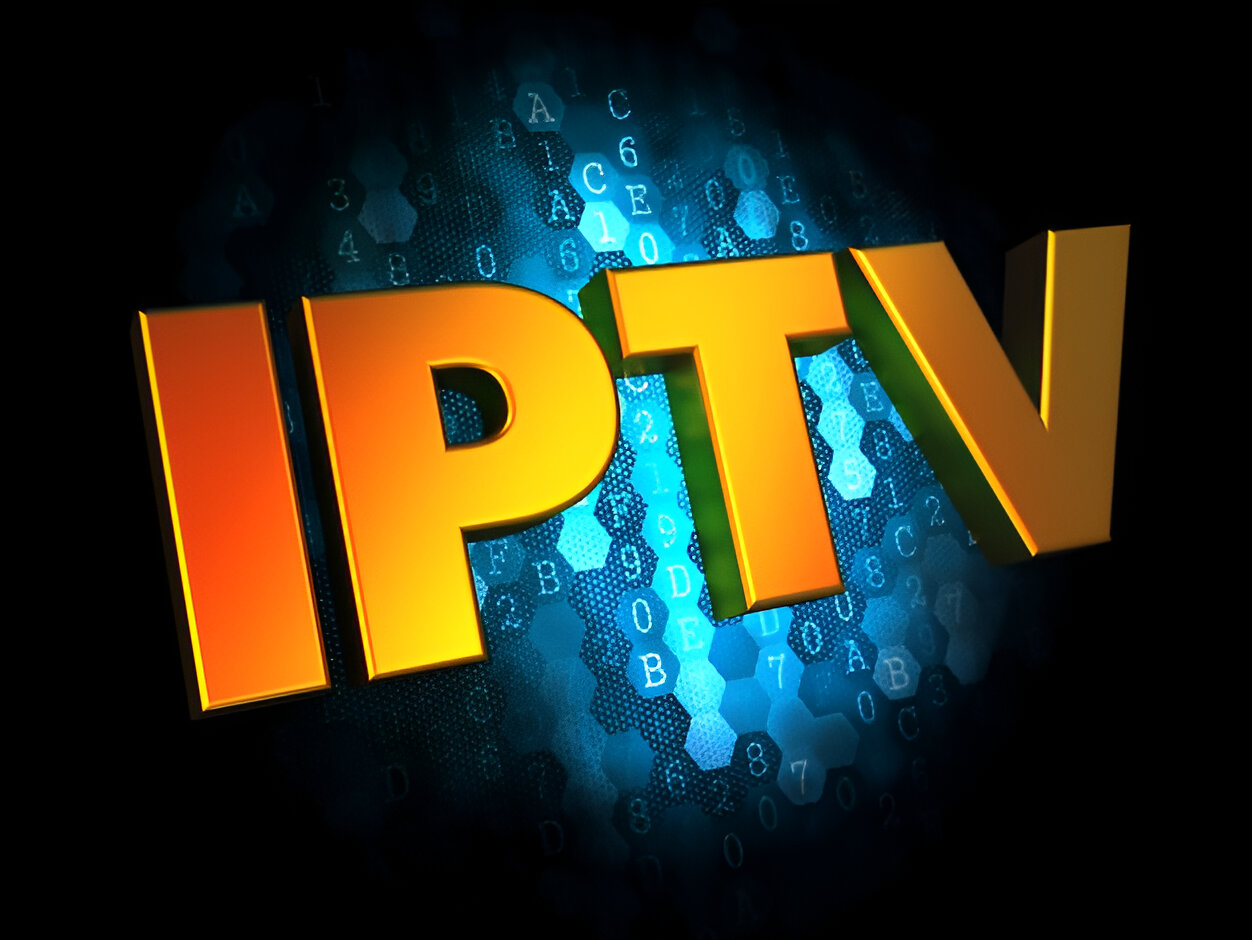
When you stream your favorite shows or movies on IPTV apps, have you ever wondered how that content stays secure? Understanding Digital Rights Management (DRM) is crucial for anyone who enjoys digital media.
DRM protects creators rights and ensures you can enjoy content without the risk of piracy. But how does it work, and what does it mean for your viewing experience?
We’ll break down the complexities of DRM and content protection in IPTV apps, making it easy for you to grasp.
By the end, you’ll know why DRM matters and how it impacts your access to digital content. Get ready to dive deep into a world that safeguards your entertainment!
What Is DRM In IPTV?
Digital Rights Management (DRM) is key in IPTV apps. It protects content from unauthorized access. DRM ensures that only authorized users can view specific media. This technology controls how content is used and shared.
DRM works by encrypting digital content. This encryption prevents copying and redistribution. It also limits access to licensed users. Content providers can set rules for how media is used. These rules can include device limits and sharing permissions.
In IPTV, DRM helps protect movies, shows, and live broadcasts. It makes sure that viewers respect copyright laws. Providers like Netflix and Hulu use DRM to secure their content. This helps them maintain control over their intellectual property.
Understanding DRM is important for both users and providers. Users get access to content legally. Providers can ensure their content is not misused. Overall, DRM plays a critical role in the success of IPTV services.
How DRM Protects Digital Content
Digital Rights Management (DRM) is essential for protecting digital content. It prevents unauthorized access and use of media. This technology helps creators and providers control their content. Understanding how DRM works can clarify its importance in IPTV apps.
Encryption And Decryption
Encryption is the first step in protecting digital content. It scrambles data, making it unreadable without the right key. Only authorized users can access the content after decryption. This process ensures that even if someone intercepts the data, they cannot understand it.
Decryption allows users to view content. However, it requires a secure key. This key is provided only to those with permission. Thus, unauthorized users remain unable to access the media.
Licensing Mechanisms
Licensing mechanisms play a crucial role in DRM. They define how users can interact with content. Each license contains specific rules. These rules may limit playback time or the number of devices allowed.
Licenses are issued to authorized users only. This control helps prevent piracy and misuse. Without a valid license, users cannot access the content.
Access Control And Restrictions
Access control is vital in protecting digital media. It restricts who can view the content. DRM systems enforce these restrictions based on user permissions.
Restrictions can include geographical limits. Some content may only be available in certain regions. This feature ensures that providers can control their distribution effectively.
In summary, DRM safeguards digital content using various methods. It combines encryption, licensing, and access control to create a secure environment.
Types Of DRM Technologies
Digital Rights Management (DRM) technologies help protect content in IPTV apps. They ensure that only authorized users can access digital media. Different types of DRM systems manage how users interact with content, preventing unauthorized sharing and copying. Understanding these technologies is essential for content protection.
Understanding the various types of Digital Rights Management (DRM) technologies is essential for anyone involved with IPTV apps. These technologies play a crucial role in protecting content from unauthorized access and piracy. Knowing the different types of DRM can help you choose the right solution for your needs and ensure your content is securely delivered to viewers.
Widevine
Widevine is a popular DRM solution developed by Google. It’s widely used by streaming services like Netflix and Amazon Prime Video. This technology provides three levels of security: L1, L2, and L3, catering to different content protection needs. – L1 offers the highest level of protection, requiring hardware-based security. – L2 works with a combination of hardware and software. – L3 is a software-only solution, providing the least security. If you want to deliver high-quality content, choosing Widevine can be a smart move. Have you ever wondered why some streaming services work flawlessly on your device while others struggle? The answer often lies in the DRM technology they employ.
Playready
PlayReady, developed by Microsoft, is another leading DRM technology. It is designed to work seamlessly across various platforms, including IPTV apps. This technology supports a variety of content types, from movies to live broadcasts. It allows for flexible licensing options, enabling content owners to control how their content is accessed and shared. – PlayReady also supports offline playback, which is a huge plus for viewers who want to enjoy content without a constant internet connection. Have you ever downloaded a movie to watch later? Chances are, if it’s from a major streaming service, PlayReady made it possible. This flexibility can greatly enhance user experience while keeping content secure.
Fairplay
FairPlay is Apple’s DRM technology, primarily used for content distributed through iTunes and Apple TV. It is designed to protect video and audio content across Apple devices. FairPlay ensures that only authorized users can access and play the content. – This DRM technology is tightly integrated with the Apple ecosystem, allowing for a smooth user experience. – It also supports adaptive streaming, which adjusts video quality based on the viewer’s internet speed. If you’re an Apple user, you’ve likely benefited from FairPlay’s efficient content protection. How often have you enjoyed seamless streaming on your device? FairPlay is often the unsung hero behind that smooth experience. Understanding these DRM technologies can empower you to make informed decisions about content protection in your IPTV apps. Each technology has its strengths, so consider your specific needs when choosing the right one for your content.
| Feature | Widevine (Google) | PlayReady (Microsoft) | FairPlay (Apple) |
| Primary Use | Streaming services (e.g., Netflix, Amazon Prime) | IPTV apps, various platforms | Apple ecosystem (iTunes, Apple TV) |
| Security Levels | Three levels: L1 (hardware), L2 (hardware+software), L3 (software only) | Hardware and software based | Hardware and software integrated within Apple devices |
| Content Types Supported | Movies, series, live streaming | Movies, live broadcasts, offline content | Video and audio content |
| Offline Playback Support | Limited, depends on implementation | Yes | Yes |
| Platform Compatibility | Android, Chrome, various browsers | Windows, Xbox, various IPTV devices | Apple devices only |
| Adaptive Streaming Support | Yes | Yes | Yes |
| Licensing Flexibility | Standard DRM licensing | Flexible licensing options | Integrated with Apple licensing system |
| Ease of Integration | Widely adopted, moderate complexity | Designed for cross-platform use | Seamless within Apple ecosystem |
| User Experience Focus | High-quality content delivery | Secure content with flexible access | Smooth streaming in Apple devices |
Benefits Of DRM For IPTV Apps
Digital Rights Management (DRM) plays a vital role in IPTV apps. It helps protect content and ensures that creators are compensated. Understanding the benefits of DRM can enhance the viewing experience for users.

Preventing Unauthorized Access
DRM technology secures content against unauthorized access. It ensures that only verified users can view the material. This control limits the risk of content being viewed by unapproved individuals.
By using encryption, DRM protects streaming content from hackers. It creates barriers that unauthorized users cannot easily bypass. This security measure helps maintain the integrity of content distribution.
Reducing Content Piracy
Content piracy remains a significant threat to creators and providers. DRM helps to combat this issue effectively. It restricts copying and sharing, making piracy more difficult.
With DRM, content is encrypted and monitored. Providers can track usage patterns. This tracking deters potential pirates from attempting to steal content.
Supporting Monetization Models
DRM supports various monetization strategies for IPTV apps. It allows providers to implement subscription models and pay-per-view options. This flexibility enables creators to earn revenue from their work.
Content protection fosters trust between providers and users. Users feel secure knowing their payments contribute to creators. This trust encourages more viewers to subscribe and pay for content.
Challenges In Implementing DRM
Implementing Digital Rights Management (DRM) in IPTV apps comes with unique challenges. These hurdles can affect both content providers and users. Striking a balance between security and ease of use is crucial. DRM must protect content without frustrating users.
Balancing Security And User Experience
DRM aims to secure content from unauthorized access. However, strict security measures can hinder user experience. For instance, complicated authentication processes may confuse users. Simple navigation is key for user satisfaction.
Users often prefer seamless access to their content. When security measures become cumbersome, users may abandon the app. Finding the right balance is essential for retaining users.
Device Compatibility Issues
Different devices support various DRM technologies. This inconsistency can lead to compatibility problems. Not all IPTV apps work on every device. Some users may face issues accessing content due to unsupported DRM.
Content providers must ensure their DRM works across multiple platforms. Testing across devices can be resource-intensive. Ensuring a smooth experience for all users remains a challenge.
Evolving Piracy Techniques
Content protection faces constant threats from piracy. As technology advances, so do piracy methods. Hackers develop new techniques to bypass DRM. This cat-and-mouse game makes it tough to secure content.
Content providers must stay updated on emerging threats. Regular updates to DRM systems are necessary to counteract these evolving techniques. Keeping pace with piracy is essential for effective content protection.
Key Features Of Content Protection
Content protection is essential for safeguarding digital media in IPTV apps. Key features include encryption, user authentication, and license management. These tools help prevent unauthorized access and ensure that only permitted users can view or share content. Understanding these features is crucial for both creators and consumers.
Understanding the key features of content protection in IPTV apps is essential for both service providers and users. Content protection helps prevent unauthorized access and distribution, ensuring that creators and distributors can maintain control over their work. Let’s explore some of the most important features that contribute to effective content protection in IPTV applications.
Watermarking
Watermarking adds an invisible identifier to your content. This technology helps track the source of leaks or unauthorized sharing. Imagine watching your favorite show, only to find it shared online without permission. Watermarking can help pinpoint where the unauthorized copy originated, allowing creators to take action. It’s a silent guardian that preserves the integrity of your viewing experience. You might wonder, how effective is this method? Well, studies show that watermarking can deter piracy by making it riskier for individuals to share content illegally.
Token-based Authentication
Token-based authentication adds another layer of security for users. Instead of relying solely on usernames and passwords, this method generates unique tokens for every session. When you log in to an IPTV app, a token is created specifically for you. This token expires after a set time, reducing the risk of unauthorized access. If someone tries to use your account, the token won’t work, keeping your content safe. Have you ever faced a situation where your account was accessed without your permission? Token-based authentication can help prevent these frustrating experiences.
Geofencing Restrictions
Geofencing uses location-based technology to restrict access to content based on geographical areas. This means that certain shows or movies might only be available in specific regions. Have you ever tried to watch a series, only to be told it’s not available in your country? That’s geofencing at work. It ensures that content owners can control where and how their material is distributed. This feature helps protect regional licensing agreements. It also encourages users to subscribe to local services, enhancing the overall viewing experience. Incorporating these key features can greatly enhance content protection in IPTV apps. Understanding how these systems work not only helps you appreciate the value of the content but also ensures a safer viewing environment for everyone.
Best Practices For IPTV Content Security
Implementing robust content security measures is crucial for IPTV apps. Protecting your digital assets not only safeguards revenue but also enhances user trust. Here are some best practices for IPTV content security that can help you maintain the integrity of your content.

Regularly Updating DRM Systems
Keeping your DRM systems updated is vital. Cyber threats evolve quickly, and outdated systems can leave you vulnerable. Regular updates ensure that you benefit from the latest security features and patches.
Consider this: a friend of mine runs a small IPTV service. He neglected to update his DRM software, and within months, he faced unauthorized access and significant revenue loss. Regular updates could have prevented this issue.
Set a schedule for updates. Whether it’s monthly or quarterly, stick to it. This proactive approach minimizes risks and keeps your content safe.
Ensuring Multi-device Support
Your audience accesses content on various devices. Ensuring that your DRM system supports multiple platforms enhances user experience and security. It allows for seamless access while maintaining content protection.
Think about it: if a user can only access your service on one device, they may seek alternatives that offer flexibility. Multi-device support not only secures content but also keeps users engaged.
Test your DRM solutions across different devices regularly. This helps identify any compatibility issues that could lead to security gaps. A smooth user experience will keep your audience loyal.
Collaborating With Trusted DRM Providers
Choosing the right DRM provider is essential for effective content protection. Collaborate with established companies known for their reliable security solutions. This partnership can significantly enhance your IPTV app’s credibility and security.
For instance, many successful IPTV services rely on providers like Google Widevine or Microsoft PlayReady. Their advanced technologies help prevent piracy and unauthorized access, ensuring your content remains secure.
Evaluate potential providers thoroughly. Look for their track record, customer reviews, and the level of support they offer. This due diligence can save you from potential pitfalls down the line.
How secure is your current IPTV content? Assess your practices regularly to ensure you’re doing everything possible to protect your digital assets.
Future Trends In DRM And Content Protection
The landscape of digital rights management (DRM) is evolving. New technologies are shaping how content is protected. As piracy threats grow, innovative solutions emerge. The focus is on stronger, smarter ways to secure content.
Organizations are investing in advanced tools. These tools enhance protection and improve user experience. Here are some key trends to watch in DRM and content protection.
Ai-powered Anti-piracy Tools
Artificial Intelligence (AI) plays a crucial role in content protection. AI tools can monitor content usage in real-time. They detect unauthorized access quickly. These systems learn from patterns, making them more efficient over time.
AI also helps in identifying pirated content online. It scans platforms and removes illegal copies. This proactive approach reduces the impact of piracy on revenue.
Blockchain For Content Authentication
Blockchain technology offers a secure way to authenticate content. It creates an immutable record of ownership. This transparency helps in proving rights to content creators. Users can trust the authenticity of the content they access.
Blockchain can also streamline royalty payments. Smart contracts ensure that creators are paid fairly and promptly. This system encourages more content production and innovation.
Cloud-based DRM Solutions
Cloud technology is transforming DRM solutions. Cloud-based systems provide flexibility and scalability. They allow content providers to manage rights across multiple devices easily.
These solutions offer robust security features. They protect content from unauthorized access while ensuring a smooth user experience. As more services move to the cloud, expect this trend to grow.
Conclusion
Protecting content in IPTV apps is essential. DRM technology plays a key role in this process. It ensures that copyright holders maintain control over their material. Users benefit too, as they receive secure access to content. Understanding DRM helps users navigate the streaming landscape confidently.
As digital content continues to grow, so does the need for effective protection. Staying informed about these technologies can enhance your viewing experience. Embrace the security that DRM offers for a better, safer digital future.
Launch and Grow Your Own Branded Smart IPTV Apps With Purple Smart IPTV Apps
Purple Smart IPTV Apps provide a comprehensive solution for rebranding and launching your own app.
With their customizable features, content management capabilities, and compatibility with multiple devices, these apps empower businesses to create a unique and engaging user experience.
Whether you are an IPTV service provider or a content owner, Purple Smart IPTV Apps offer key features and benefits that can help you succeed in the competitive streaming market.
So why wait? Take advantage of Purple Smart IPTV Apps and take your brand to new heights.
Our range of customizable apps is as follows
- Purple Smart IPTV Player – Click here to know more
- Purple Launcher – Click here to know more
- Purple iOS – Click here to know more
- Purple Lite – Click here to know more
- Purple VOD – Click here to know more
- Purple Apple TV – Click here to know more
- Purple DNS – Click here to know more
- Purple Windows & Mac – Click here to know more
- Purple Web Player – Click here to know more
- Purple Remote – Click here to know more
- Purple Tools | VPN – Click here to know more
- Purple Video Player – Click here to know more
- Purple Simple Player – Click here to know more






